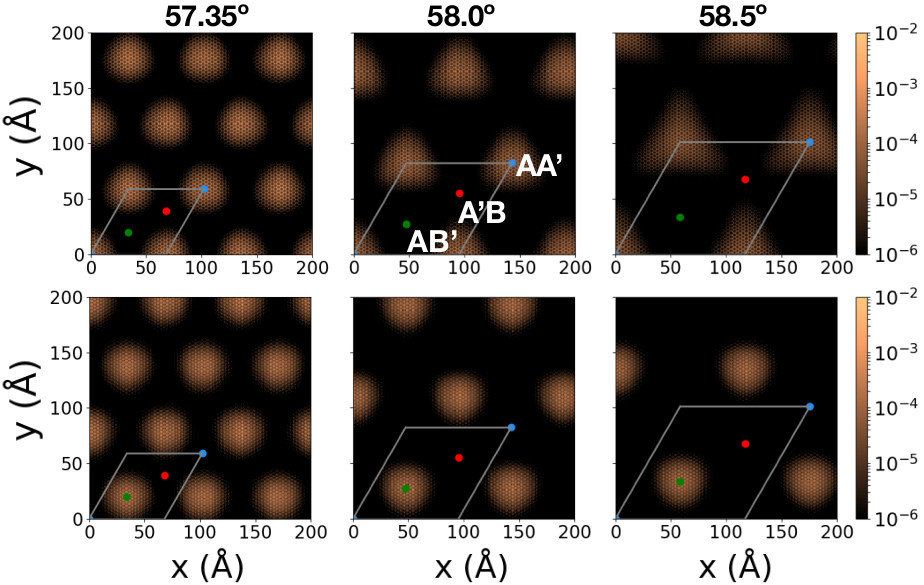
Valence and conduction band localization in twisted bilayer MoS$_2$ for angles close of 60$^\circ$.
Ultraflat bands in twisted bilayers of two-dimensional materials have potential to host strong correlations, including the Mott-insulating phase at half-filling of the band. We have studied the emergence of ultraflat bands at the valence band edge in twisted bilayer MoS$_2$, a prototypical transition metal dichalcogenide [1]. Large structural transformations in the Moire patterns lead to formation of shear solitons at stacking boundaries and strongly influence the electronic structure. We extend our analysis for twisted bilayer MoS$_2$ to show that flat bands can occur at the valence band edge of twisted bilayer WS$_2$, MoSe$_2$ and WSe$_2$ as well. Upon probing the origin and evolution of ultraflatbands [2] in these systems we find no unique magic angles for flatband formation, unlike twisted bilayer graphene. For twist angles close to 60$^\circ$, local strains cause the formation of modulating triangular potential wells such that electrons and holes are spatially separated. This leads to multiple energy-separated ultraflatbands at the band edges closely resembling eigenfunctions of a quantum particle in an equilateral triangle well. Twisted bilayer transition metal dichalcogenides are thus suitable candidates for the realisation of ordered quantum dot array.
References
[1] Ultraflatbands and Shear Solitons in Moiré Patterns of Twisted Bilayer Transition Metal Dichalcogenides, Mit H. Naik, Manish Jain, Physical Review Letters 121, 266401 (2018).
[2] Origin and evolution of ultraflat bands in twisted bilayer transition metal dichalcogenides: Realization of triangular quantum dots, Mit H. Naik, Sudipta Kundu, Indrajit Maity, Manish Jain, Physical Review B 102, 075413 (2020).